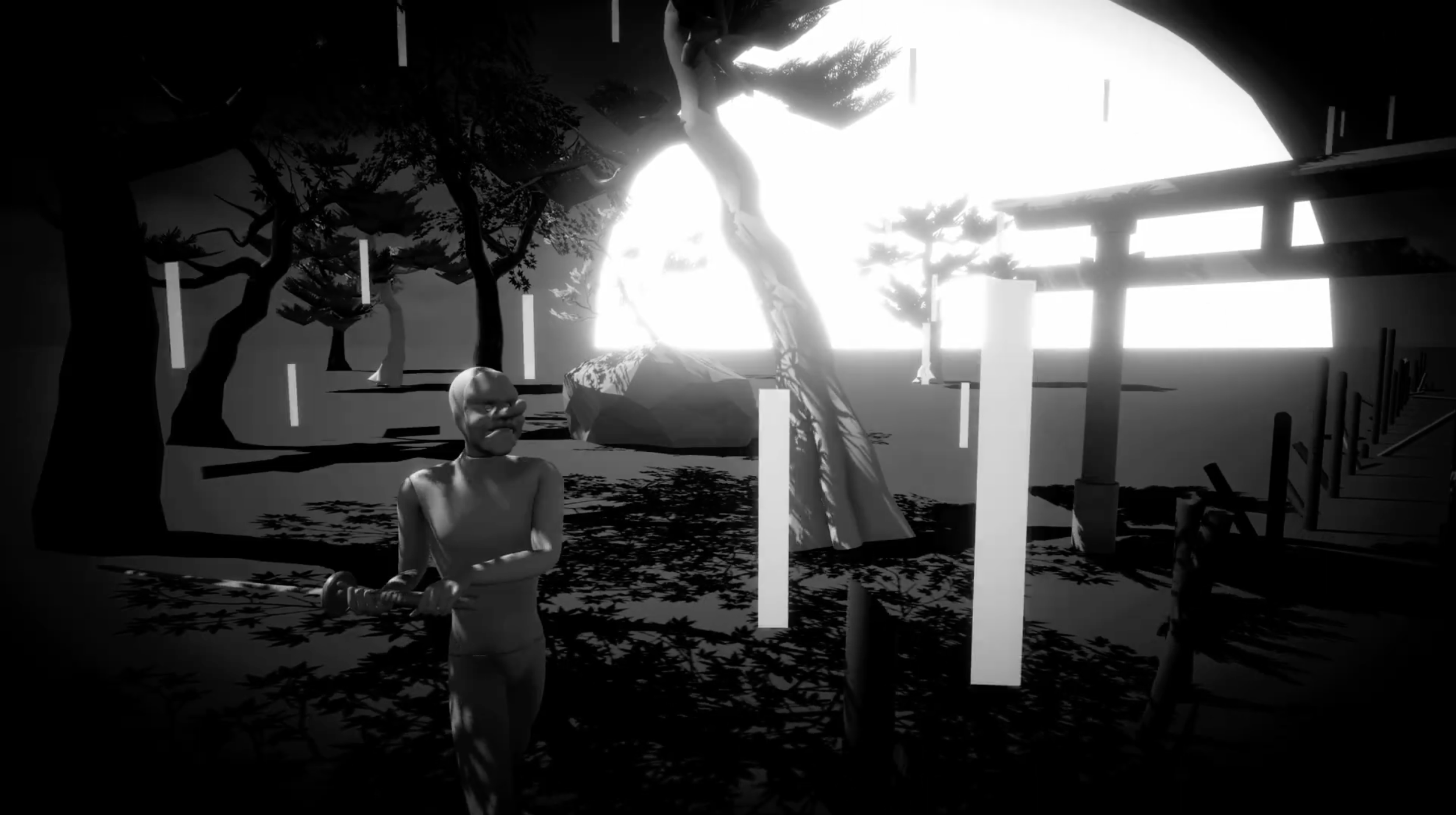試し斬り
tameshigiri
A hack-and-slash game designed for gamepad control
The player takes on the role of a Tengu swordsman, performing test cuts, nothing more, nothing less.
Gameplay
The player uses the left and right analog sticks to control the angle and height of the blade—then simply cuts the target.
Design Goals
At Brooklyn Zentokan, the Iaido dojo I attend, we practice tameshigiri—test cutting with real swords on tatami mats—weekly.
What has always fascinated me is that in traditional Japanese culture, the sword and the act of cutting are not typically associated with the thrill of combat, but rather with discipline, restraint, and introspection. While inherently aggressive, the motion of the cut carries a sense of zen-like clarity and self-mastery.
With that in mind, I set out to create a simple game that simulates the practice of test cutting—a space where players can experience the quiet intensity of the blade, free from battle, score, or spectacle.
Design Challenges
In real-life tameshigiri practice, the angle of the cut is critical. However, precision in attack angles is often overlooked or simplified in most games.
I wanted to focus specifically on blade angle control in my design. Drawing inspiration from the Blade Mode in Metal Gear Rising: Revengeance, I set out to create a game in which cutting is not just a visual effect but a core mechanic requiring precision, intent, and control.
Game Vision
As a weekend experimental mini-game, I couldn’t expand much on the gameplay mechanics of TAMESHIGIRI.
However, I still have a strong vision for its potential framework.
When discussing action games, I’ve noticed that players often pay little attention to narrative. Perhaps this is because in this genre, the heavy focus on mechanics and responsiveness tends to come at the cost of storytelling.
While designing TAMESHIGIRI, I kept asking myself: What kind of story could this game tell?
Is it about the training and growth of a young apprentice?
Or perhaps the descent of a swordsman into madness, told entirely through the act of cutting?
This led me to a key design question:
Can a story be told purely through combat and interaction?
I plan to expand this project by letting the objects being cut and the context of each cut evolve meaningfully. My goal is to explore how the narrative can emerge through gameplay changes, making cutting a mechanic and a medium for storytelling.





